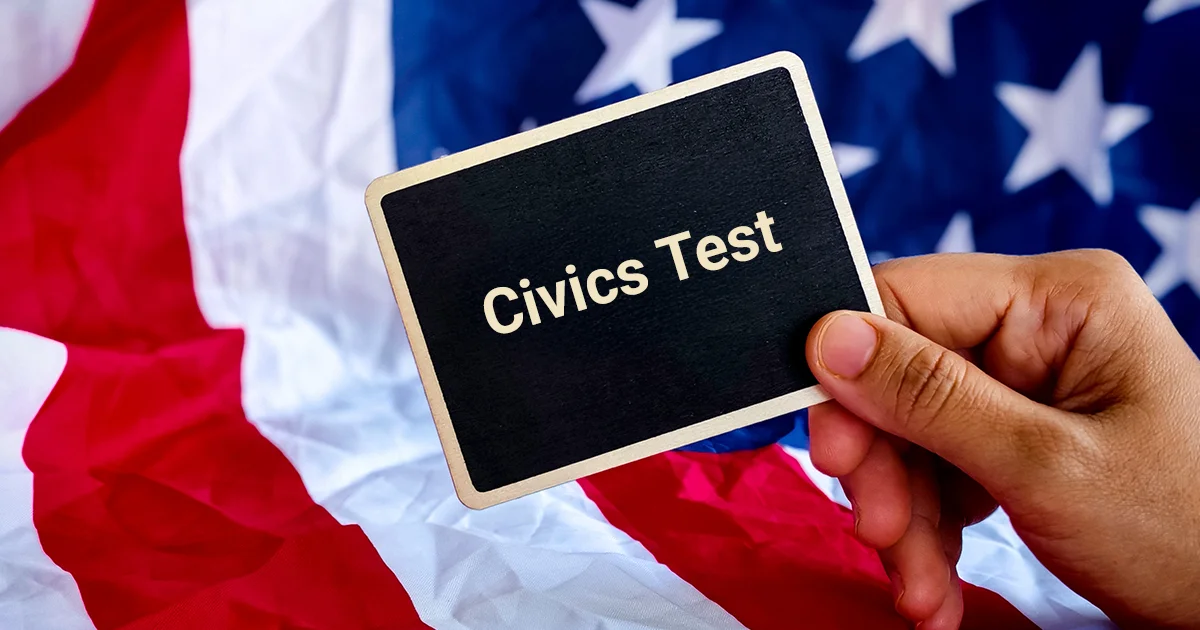
The U.S. Citizenship and Immigration Services (USCIS) recently issued Policy Alert PA-2025-24, revising the USCIS Policy Manual to implement the 2025 version of the civics test for naturalization applicants. The updated guidance applies to all Form N-400 applications filed on or after October 20, 2025, with public feedback accepted until November 20, 2025.
In this article, I outline what applicants and practitioners should know about the new civics test—its key changes, filing-date cutoff, and practical implications—and how it may affect those preparing for naturalization. At SG Legal Group, my team and I are closely monitoring these updates to help clients plan their filings and prepare effectively.
Overview of change
USCIS is replacing the civics component of the naturalization test for applicants filing Form N-400 on or after October 20, 2025, with what is being called the “2025 Naturalization Civics Test.”
Key changes include:
Why it matters
According to USCIS, the revision is part of a broader effort to “better assess applicants’ knowledge of U.S. history and government” and align with statutory requirements.
In effect, the civics portion of the test becomes more demanding—not only in number of questions, but in the breadth of content under review.
Because the version of the civics test depends on the filing date of Form N-400, the cutoff of October 20, 2025 is critical.
Some practical points:
In my practice at SG Legal Group, I advise clients to plan carefully around this cutoff if they’re near eligibility and want to optimize the test version.
Preparation and study burden
Because the new 2025 version features more questions and a higher threshold, applicants should anticipate more rigorous preparation. Study materials, flash-cards, and practice tests will be updated.
Attorneys should incorporate this into their planning and advise clients accordingly.
Timing strategy
Clients who are filing soon should weigh the benefits of filing before the cutoff versus waiting and preparing for the new version. In some cases, it may make sense to accelerate filing if readiness allows.
Impact on special classes
Applicants eligible under age/residence exemptions (e.g., 65/20 rule) must also account for which version applies to them. The guidance indicates that the older version may still apply if their filing date falls before the cutoff.
Feedback period
USCIS is soliciting feedback on the guidance (via PA-2025-24). Interested practitioners may review the proposed changes and consider submitting comments by the deadline of November 20, 2025. This is an opportunity to identify practical concerns or implementation issues.
Changing the civics test affects more than just a portion of the interview—it reflects a shift in agency approach and places additional emphasis on “knowledge of U.S. history and government” as a threshold for citizenship. In my experience at SG Legal Group, clients often view the civics test as a final hurdle. With the 2025 update, the hurdle is higher, and the margin for error narrower.
From a legal perspective:
The issuance of Policy Alert PA-2025-24 marks a significant update in the naturalization landscape: from October 20, 2025 onward, new applicants will face the 2025 Naturalization Civics Test—with a larger question bank and higher passing requirement. As an immigration attorney at SG Legal Group, I recommend you verify your filing strategy, prepare carefully, and stay abreast of the evolving guidance.
If you need experienced legal guidance for your citizenship application process—whether navigating the civics requirement, filing Form N-400, or preparing study materials—my team at SG Legal Group is ready to assist. Consultations are available in English, Russian, or Romanian. Call 410-344-7100 or visit our contact page to schedule a consultation.
Oleg Gherasimov, Esq.
Stay informed with our latest updates.